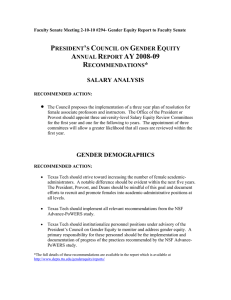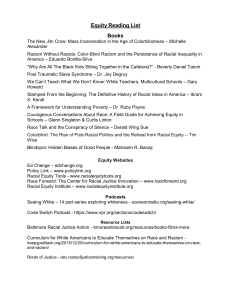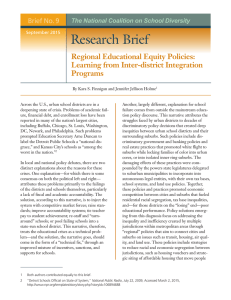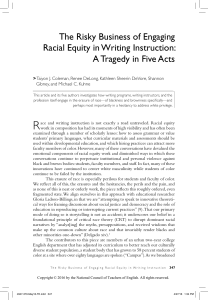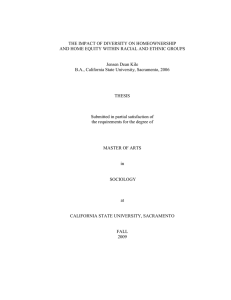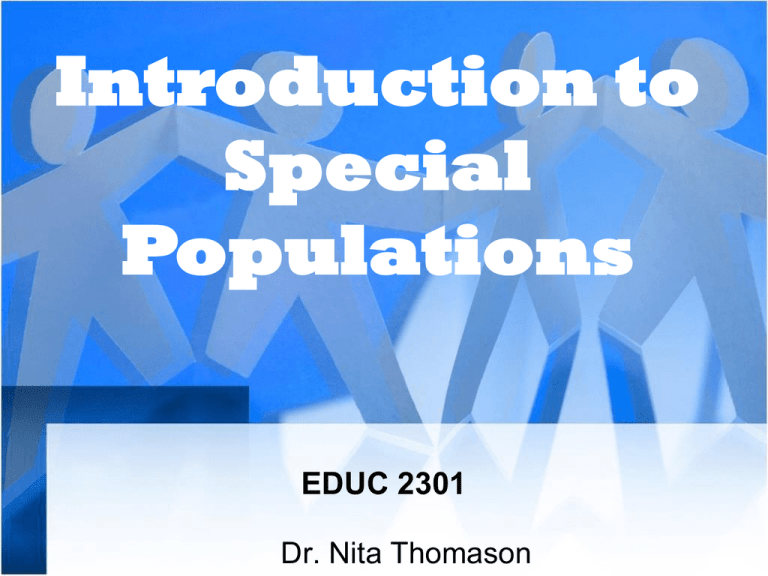
Introduction to
Special
Populations
EDUC 2301
Dr. Nita Thomason
Chapter 1
Equity Influences: Are All Things Equal in Schools?
Equity
• Fairness – personal and social
circumstances are not an obstacle to
achieving educational potential
• Inclusion – basic minimum standards for
ALL
• All – people from various cultures, from
various socio-economic groups, different
genders, from varying racial groups,
people with special learning needs, those
who speak different languages
“Students who feel their culture is valued
and understood by the school and the
larger community tend to do better in
school than those who feel it is rejected.”
It is important that educators understand,
respect, value, and embrace diverse
cultural perspectives and ways of being in
the world (Ashworth, 1992, p. 14).
Culture
Define culture.
Culture, as the term is used in this text,
refers to: “characteristic[(s)] of ([an)]
individual’s society, or some subgroups
within the society . . . ([it]) includes,
values, beliefs, notions about acceptable
and unacceptable behavior, and other
socially constructed ideas that members
of the culture are taught are true.
Class Roll & Introductions: Introduce
yourself on the basis of one aspect of this
definition.
The Reality of Social Change
Two major social changes affecting
education are taking place:
– Changes in demographics
– Changes in social institutions
Criteria for Successful Schools
- Academically excellent
- Developmentally responsive
- Socially equitable, democratic and fair
6
Equality/Equity
• Equality of Opportunity
• Equity as Quality of Results
• Issues of Complexity
– Problems may not be understood completely
or perspectives differ about solutions
– Political challenges
– Takes years to understand, formulate policy,
act and then the results aren’t predictable
Form Homogeneous Group of 6 based
on two of the following characteristics
•
•
•
•
•
•
Race
Social Class
Sex/Gender
Disability
Religious Affiliation
Immigrant
Group Exercise
•
In the same groups as you were in yesterday, discuss the following
regarding the schools you attended:
– a. Would you describe the school you attended as monocultural or
multicultural?
– b. What was the usual form of teaching?
– c. What type of technology was utilized in classrooms?
– d. What roles did adult men and women hold in the school?
– e. What was the racial and/or ethnic composition of students in the school?
– f. What was the racial and/or ethnic composition of employees in the school?
– g. What religions were represented in the population of the school?
– h. What types of family structures were represented in the school?
– i. Was the school big or small?
– j. What types of classes did you attend (e.g., math, death and dying, the
wonders of Islam)?
– k. What choices of classes were available to you and what choices would you
like to have had?
•
How are these things different in the classrooms you have observed
recently?
Educational Funding and Equity
•
•
•
•
•
Politics
Legislative Branch Incentives
Executive Branch
Judicial Branch
Interest Groups
©2012 Cengage Learning.
All Rights Reserved.
Texas School Funding
• Proportional Funding Levels
• 1989 – Texas School Financing found
unconstitutional
• 1995 – Edgewood versus Kirby
– Recapture/redistribution (Robin Hood)
• 2009 American Recovery Act
– Race to the Top $100 billion
• 2011End of Federal Cash Infusion and
drastic cuts from the Texas Legislature
• 2013 Some of finances restored



